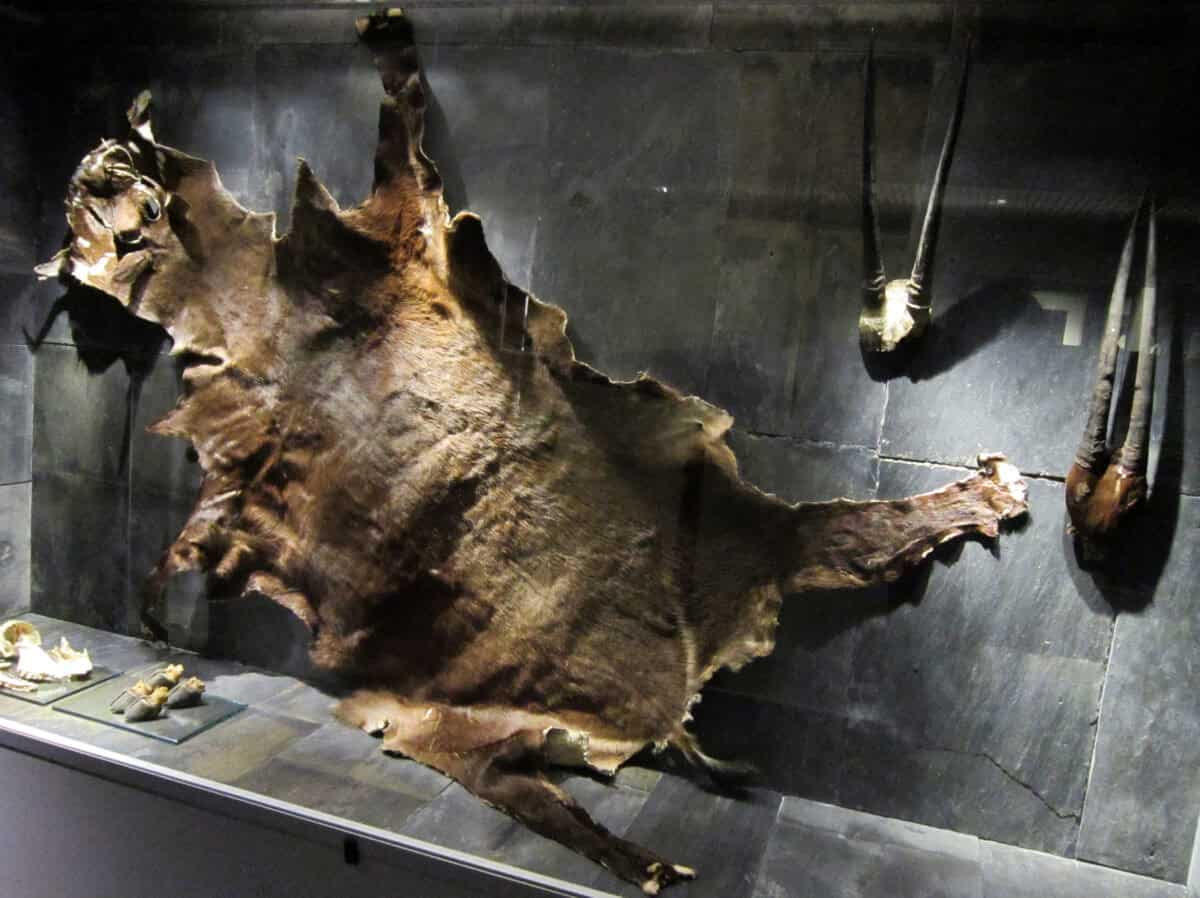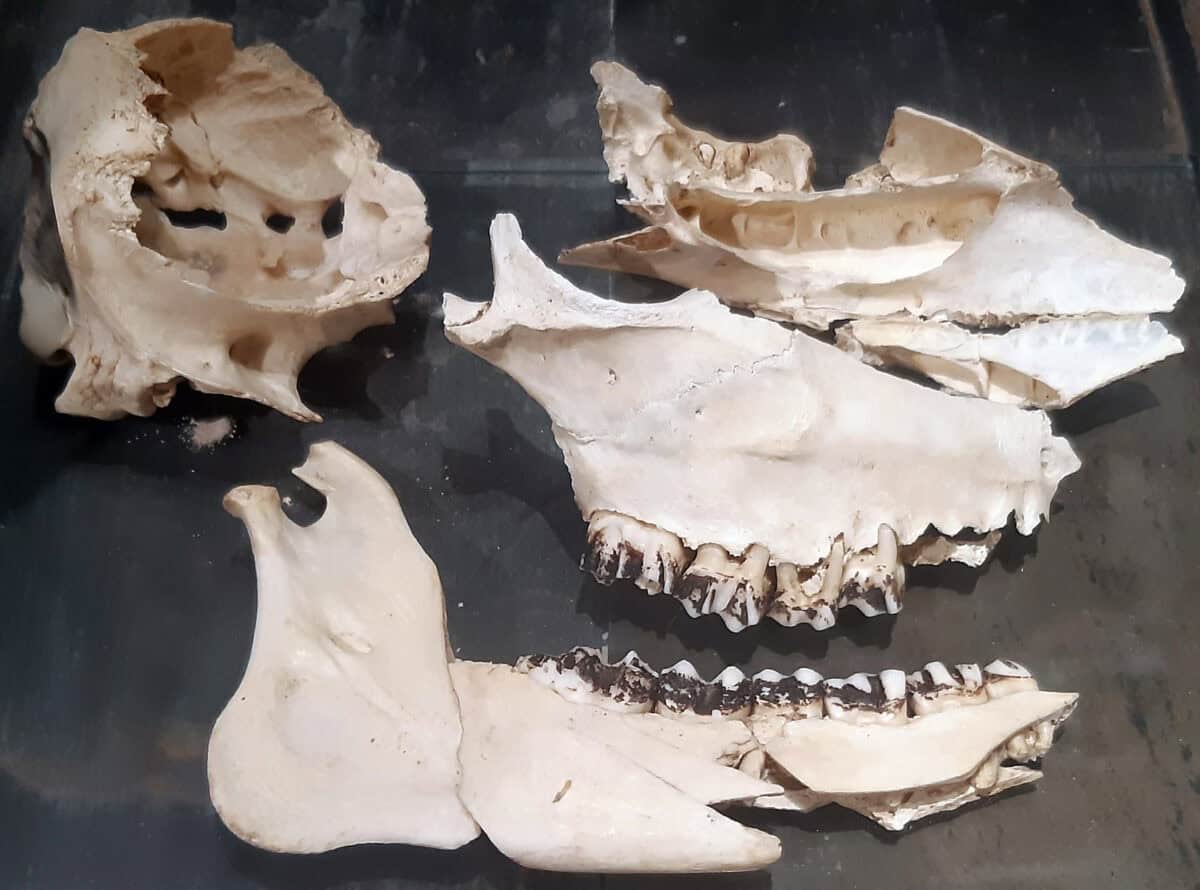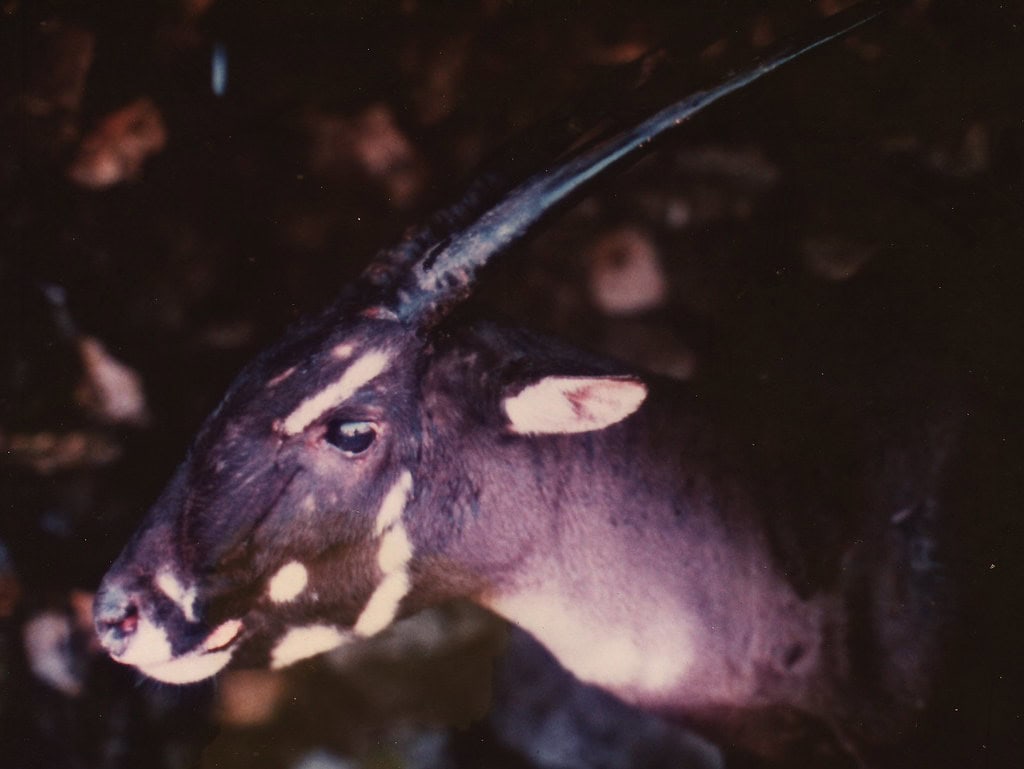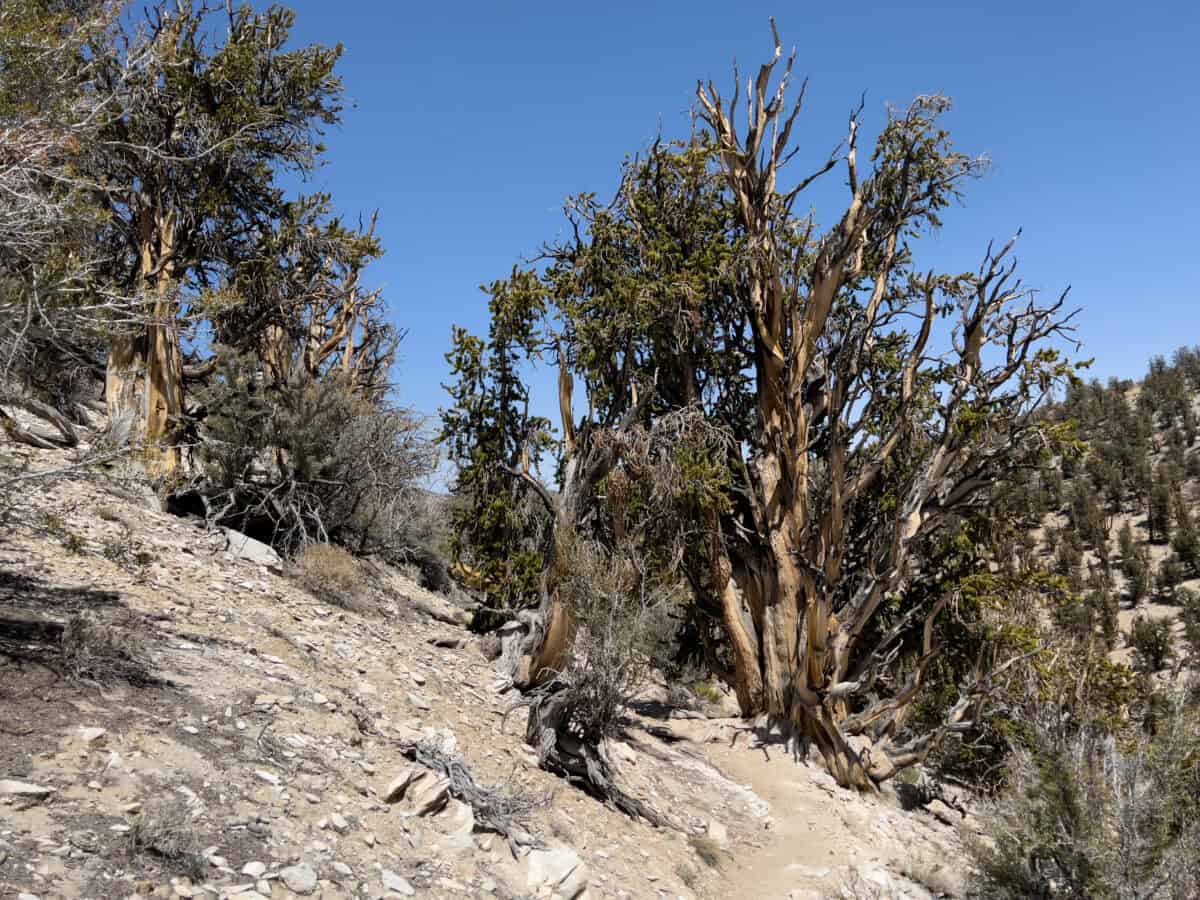Deep in the mist-shrouded Annamite Mountains that stretch across Vietnam and Laos lives a creature so elusive that scientists didn’t discover it until 1992. The saola (Pseudoryx nghetinhensis), often called the “Asian unicorn,” is considered the rarest large mammal on the planet. This critically endangered bovine exists in such small numbers that wildlife biologists have only photographed it in the wild a handful of times. With fewer than 100 individuals estimated to remain, the saola represents one of conservation’s most urgent challenges. Its discovery was hailed as one of the most spectacular zoological findings of the 20th century, yet most people have never heard of this remarkable animal that stands on the precipice of extinction. This is the story of the saola—a living ghost that embodies both the wonders still hidden in our natural world and the devastating consequences of human encroachment on wilderness.
The Remarkable Discovery

The scientific community was stunned in May 1992 when a joint team of researchers from Vietnam’s Ministry of Forestry and the World Wildlife Fund (WWF) found an unusual skull with long, parallel horns in a hunter’s home in Vietnam’s Vu Quang Nature Reserve. This discovery represented the first large mammal new to science in more than 50 years and the first ever discovered in Vietnam. The finding was extraordinary not just because new large mammal discoveries are exceedingly rare, but because it happened in a relatively well-explored region of Southeast Asia, not in some remote, untouched wilderness. The animal was formally described in 1993, and biologists classified it as a new genus in the bovid family, related to cattle, goats, and antelopes. The scientific name, Pseudoryx nghetinhensis, refers to its superficial resemblance to the oryx antelopes of Africa and the Nghe An and Ha Tinh provinces where it was first discovered.
Physical Characteristics

The saola is a striking animal with a distinctive appearance that sets it apart from other bovids. Standing approximately 33 inches (85 cm) tall at the shoulder and weighing between 176-220 pounds (80-100 kg), the saola has a sleek, dark brown coat with a black stripe running down its back. Its most remarkable feature is the pair of long, nearly parallel horns that can reach up to 20 inches (50 cm) in length. These horns, present in both males and females, are straight with sharp tips and grow almost directly backward from the head. The saola’s face displays distinctive white markings, including a white stripe above each eye, white patches on the cheeks, and a white chin and throat. These facial markings, combined with its large maxillary glands beneath each eye (which can expand when the animal is excited), give the saola a gentle, almost delicate appearance compared to other wild cattle. Its slender legs and relatively small hooves suggest an adaptation to the soft, often muddy terrain of its mountain forest habitat.
Habitat and Range

The saola occupies a remarkably limited geographic range, confined to the Annamite Mountains along the border between Vietnam and Laos. These mountains, characterized by rugged limestone karst formations, create a unique ecosystem of dense evergreen forests with high rainfall and humidity. Saolas prefer forested habitats at elevations between 1,000 and 4,000 feet (300-1,200 meters), particularly in areas with access to small streams or rivers. They appear to inhabit the dense understory of these tropical forests, navigating the steep, often fog-covered mountain slopes with surprising agility. Unfortunately, their range continues to contract as human activities fragment the forest. Today, saolas likely exist only in disconnected forest patches across approximately 2,400 square miles (6,000 square kilometers)—an area smaller than the state of Delaware. Their extraordinarily restricted range contributes significantly to their vulnerability, as they have nowhere else to go when their habitat is disturbed or destroyed.
Behavior and Diet

Due to its extreme rarity and the challenging terrain it inhabits, scientists have gathered very little information about the saola’s natural behavior. What is known comes primarily from camera trap images, brief observations, and the study of a few captured individuals that unfortunately died shortly after capture. Saolas appear to be primarily diurnal (active during daylight hours) and may live either solitarily or in small groups of two to three individuals. They are believed to be browsers rather than grazers, feeding on the leaves, fruits, and shoots of riverside vegetation. Their diet likely includes fig leaves, vines, and other plants growing near forest streams. Unlike many bovids that rely on speed to escape predators, saolas seem to be shy, secretive animals that depend on their excellent senses and the dense forest cover to avoid detection. They’re known to mark their territory using secretions from their large facial scent glands, leaving behind a pungent, bitter smell on leaves and branches that may help individuals locate each other in the dense forest.
Reproduction and Lifespan

The reproductive biology of the saola remains largely a mystery due to the lack of scientific observation opportunities. Based on limited information and knowledge of related species, researchers believe saolas likely have a gestation period of 8-9 months, typical of similarly sized bovids. Females are thought to give birth to a single calf, probably timing births to coincide with the onset of the rainy season when vegetation is most abundant. Camera trap photos have occasionally captured images of adult saolas with young calves, suggesting they may reproduce annually under favorable conditions. The natural lifespan of saolas in the wild is unknown, though it’s estimated they could potentially live 8-11 years based on other similar-sized bovids. The only saolas ever held in captivity—animals captured by local villagers—survived only a few weeks to a few months, suggesting they may be particularly sensitive to stress or have specialized dietary needs that are difficult to replicate in captivity. This inability to successfully maintain saolas in controlled environments has severely hampered conservation breeding efforts.
Conservation Status and Threats

The International Union for Conservation of Nature (IUCN) lists the saola as Critically Endangered, the highest risk category before extinction in the wild. Current population estimates suggest fewer than 100 individuals remain, possibly as few as 18-20 in the most pessimistic assessments. The primary threats driving the saola toward extinction are widespread and increasing. Hunting, particularly with wire snares set for other animals like deer and wild pigs, claims many saolas as unintended bycatch. Commercial poaching for the wildlife trade, driven by demand for traditional medicine ingredients and exotic meat, further reduces their numbers. Habitat loss and fragmentation due to logging, agricultural expansion, and infrastructure development (particularly roads that provide poachers easier access to remote areas) continue to shrink their already limited range. The species’ naturally low population density, restricted habitat, and presumed low reproductive rate make recovery particularly challenging, even if these threats could be immediately addressed.
Cultural Significance

Despite being unknown to Western science until 1992, the saola has long been familiar to indigenous communities living in and around the Annamite Mountains. Local names for the animal vary among different ethnic groups in Vietnam and Laos, including “saht-supahp” (the polite animal) in Lao, referring to its gentle, non-aggressive nature. In Vietnamese, it’s sometimes called “ngưu lĩnh” (mountain cattle) or “sao la,” which may refer to the spindly appearance of its horns when viewed from the side. For many local communities, the saola holds cultural significance as an embodiment of the forest’s spirit and vitality. Traditional stories often portray the saola as an elusive, almost mythical creature associated with good fortune when glimpsed. This cultural connection offers a potential foundation for conservation efforts, as many local communities maintain traditional prohibitions against hunting certain animals, including in some areas, the saola. Conservationists are increasingly working to strengthen these cultural values while developing alternative livelihoods that reduce dependence on forest resources.
Scientific Importance

The saola represents a remarkable scientific discovery that has rewritten our understanding of large mammal evolution in Southeast Asia. As the only member of its genus (Pseudoryx), it occupies a unique evolutionary branch within the bovid family. Genetic studies have revealed that despite its superficial resemblance to desert antelopes, the saola is most closely related to wild cattle, having diverged from its nearest relatives approximately 8 million years ago. This makes it a living fossil of sorts—an evolutionary relic that has survived in isolation while its closest relatives either went extinct or evolved into different forms. The saola’s discovery in 1992 also served as a powerful reminder that significant biological discoveries remain possible, even in regions considered well-explored. Its existence sparked renewed scientific interest in the Annamite Mountains, leading to the subsequent discovery of other previously unknown species including the large-antlered muntjac deer, Annamite striped rabbit, and several new rodent species. Biologists now recognize this region as an important center of endemism—a biological hotspot where unique species evolved in isolation.
Conservation Efforts

Saving the saola from extinction requires coordinated international action, and several promising initiatives are underway. In 2006, the IUCN established the Saola Working Group, bringing together conservation organizations, scientists, and government representatives from Vietnam and Laos. This group coordinates research and protection efforts across the saola’s range. One of the most successful conservation approaches has been the deployment of Forest Guard patrols staffed by local community members who remove snares and deter poachers. In some areas, these patrols have removed over 130,000 snares, significantly reducing hunting pressure. Protected areas have been established or expanded in both countries, including Vietnam’s Saola Nature Reserves in Thua Thien Hue and Quang Nam provinces, and Laos’ Xe Sap National Protected Area. Conservation groups are also exploring the possibility of establishing a captive breeding population as insurance against extinction, though capturing wild saolas presents enormous challenges. The most promising approach may be a combination of strict protection of key forest areas, aggressive anti-poaching efforts, and community-based conservation that provides economic alternatives to forest exploitation.
Challenges to Recovery

The path to saola recovery faces formidable obstacles that make this species one of conservation’s most challenging cases. The animal’s extreme rarity makes scientific study nearly impossible—researchers can’t protect what they don’t understand, and basic questions about saola ecology, reproduction, and habitat needs remain unanswered. The remote, mountainous terrain where saolas live makes monitoring and protection logistically difficult and expensive. Political and economic factors further complicate conservation efforts, as both Vietnam and Laos are developing nations with limited resources for wildlife protection and strong economic incentives for resource extraction. Infrastructure development, particularly the construction of hydroelectric dams and roads, continues to fragment saola habitat. Even well-intentioned conservation initiatives face challenges, as capture attempts for captive breeding have thus far resulted in animal deaths, likely due to stress and the lack of knowledge about proper care. Perhaps most concerning is that time is running out—with such a small population, the saola could disappear before effective conservation measures can be implemented.
Research and Monitoring Methods

Studying an animal as rare as the saola requires innovative approaches that minimize disturbance while maximizing information gathering. Camera trapping has become the primary research tool, with motion-activated cameras placed in strategic locations throughout potential saola habitat. These cameras can document presence without disturbing the animals, though saola captures on camera remain exceedingly rare. Environmental DNA (eDNA) sampling represents a promising new technique where researchers collect water, soil, or leeches from the forest and analyze them for traces of saola DNA, potentially confirming presence without direct observation. Local ecological knowledge—information gathered from indigenous communities with generations of experience in the forest—provides valuable insights about historical distribution and behavior. Tracking teams composed of local hunters-turned-conservationists search for the distinctive tracks, dung, and territorial markings of saolas. Despite these efforts, confirmed saola sightings remain so rare that the most recent confirmed observation (through camera trap images) was in 2013 in Vietnam’s Central Annamite Mountains. This lack of data makes population monitoring extremely difficult and complicates conservation planning.
The Saola as a Flagship Species

Conservation organizations increasingly promote the saola as a “flagship species”—a charismatic animal whose protection can benefit entire ecosystems and the many less-famous species that inhabit them. The saola’s unique appearance, interesting story of discovery, and critically endangered status make it an effective ambassador for the lesser-known Annamite Mountains ecosystem. By focusing attention on saola conservation, organizations can generate support for protecting large swaths of forest that shelter numerous other threatened species, including the recently discovered large-antlered muntjac, Annamite striped rabbit, red-shanked douc langur, and various species of pheasants and partridges found nowhere else on Earth. The Annamite Mountains are recognized as a global biodiversity hotspot, with exceptionally high levels of endemic species (those found nowhere else) and severe conservation threats. By rallying support around the saola, conservationists hope to preserve not just a single species but an entire evolutionary laboratory that has produced some of Southeast Asia’s most distinctive wildlife.
The Future of the Saola

The fate of the saola hangs in a precarious balance, with the next decade likely determining whether this remarkable species survives or joins the growing list of extinction’s casualties. If current threats continue unabated, the saola will almost certainly disappear within our lifetime—potentially within years rather than decades. However, targeted conservation efforts offer reasons for cautious hope. The creation of the Saola Conservation Breeding Center in Vietnam’s Bach Ma National Park represents a significant step forward, establishing facilities and expertise for potential captive breeding should any saolas be captured. Advances in genetic technology may eventually allow scientists to resurrect the species even if it goes extinct in the wild, though such approaches remain highly experimental. More immediately promising are intensive snare-removal campaigns and the establishment of “no-hunting zones” with genuine enforcement capacity. The saola’s future ultimately depends on whether humans can quickly scale up protection efforts and whether enough habitat remains to support a viable population. Though the challenge is immense, the story of the saola need not end in extinction if decisive action is taken immediately.
Conclusion

The saola stands as both a biological marvel and a stark reminder of how easily Earth’s treasures can slip away unnoticed. Discovered just three decades ago, this living fossil that survived millions of years of evolution now faces extinction due to human activities that have accelerated within a single human generation. The saola’s story encapsulates the broader biodiversity crisis facing our planet—countless species disappearing before science can fully understand them, often due to preventable human activities. Yet the ongoing efforts to save this elusive bovid also demonstrate humanity’s capacity for conservation innovation and cross-border cooperation in the face of seemingly impossible odds. Whether the saola survives ultimately depends on our collective willingness to value biodiversity and make the difficult choices necessary to preserve Earth’s evolutionary heritage, even when those choices conflict with short-term economic interests. The Asian unicorn challenges us to prove that we can share this planet with creatures so rare they seem almost mythical—and in doing so, perhaps save a piece of ourselves.
- How Penguins Take Turns at Sea and Nest to Raise Chicks - August 9, 2025
- Dolphin Brains Compare to Those of Apes and Humans - August 9, 2025
- 14 Cutting-Edge Biotech Innovations That Will Shape the Future - August 9, 2025
